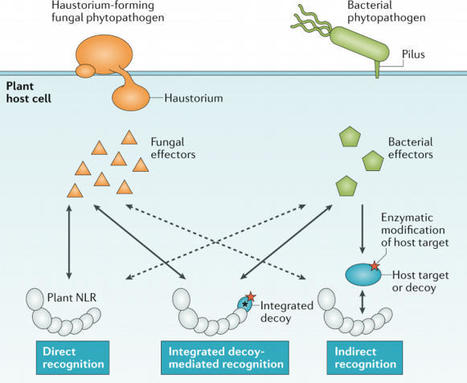Animal and plant immune systems use intracellular nucleotide-binding oligomerization domain (NOD)-like receptors (NLRs) to detect pathogens, resulting in the activation of immune responses that are often associated with localized host cell death. Whereas vertebrate NLRs detect evolutionarily conserved molecular patterns and have undergone comparatively little copy number expansion, plant NLRs detect virulence factors that have often diversified in plant pathogen populations, and thus plant NLRs have been subject to parallel diversification. Plant NLRs sense the presence of virulence factors with enzymatic virulence activity often indirectly through their modification of host target proteins. By contrast, phytopathogenic virulence factors without enzymatic activity are usually recognized by NLRs directly by their structure. Structural and biochemical analyses have shown that both indirect and direct recognition of plant pathogens trigger the oligomerization of plant NLRs into active complexes. Assembly into three-layered ring-like structures has emerged as a common principle of NLR activation in plants and animals, but with distinct amino-terminal domains initiating different signalling pathways. Collectively, these analyses point to host cell membranes as a convergence point for activated plant NLRs and the disruption of cellular ion homeostasis as a possible major factor in NLR-triggered cell death signalling. The structures of activated nucleotide-binding oligomerization domain (NOD)-like receptors (NLRs) in plants and animals reveal a common principle of NLR activation, but allow different modes of non-self recognition and the initiation of different immune signalling and cell death pathways.

|
Scooped by Gilbert C FAURE |
No comment yet.
Sign up to comment



 Your new post is loading...
Your new post is loading...






